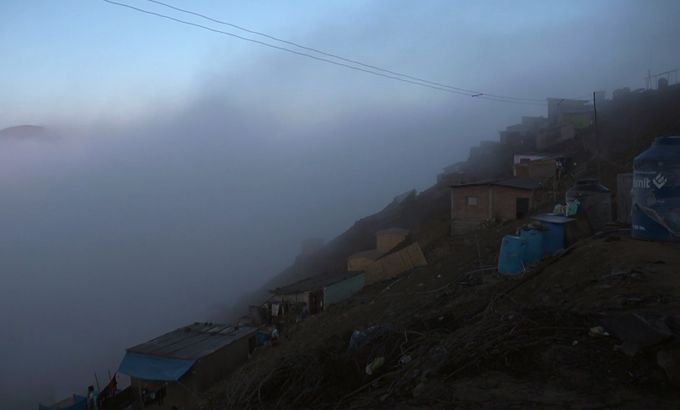
Bronx River Revival & Water Harvesting in the Andes
How the Andes are being transformed by fog catchers; cleaning the Bronx River; and Britain’s bog rescue.
Fog Nets
More than a million residents living in Peru’s capital Lima do not have access to running water.
Keep reading
list of 4 itemsLost Futures
Photos: Greek valley that became a lake stirs drought debate
Botswana threatens to send 20,000 elephants to Germany
But in the arid hillsides surrounding the capital – the second driest in the world – farmers are using simple fog nets to catch moisture in the air.
The area’s thick fog condenses on specially erected mesh nets, and drips onto a plastic gutter before collecting in a storage tank. The water is then used to irrigate crops on once barren land.
Russell Beard travels to the foothills of the Andes to see landscapes and communities transformed by these simple fog catchers.
Bronx River Revival
In one of the poorest neighbourhoods of New York, a green revolution has helped transform a river once treated as an open sewer into a flourishing waterway.
In 2001, a band of passionate community leaders such as Majora Carter came together to clean up the Bronx river. Together they removed over 600 tonnes of trash, 30,000 old tyres and 89 dumped cars.
“We had to help people understand that ‘the environment’ wasn’t something that was out there in some other part of the country but it was right here in their backyard,” explains Majora Carter. “We actually had this amazing resource that if we were strategic about could be a beautiful, recreational space for us…”
Although the river has become a valued asset since the clean-up, it is far from being fully restored. Adam Green runs an organisation called ‘Rocking The Boat’ which recruits teenagers from the mostly Black and Latino neighbourhood to clean the river and also deal with the untreated sewage that overflows from the old storm water system.
We join Yasmeen Qureshi as she helps the young recruits build a boat and navigate the river to collect samples monitoring its health.
Britain’s Bog Rescue
It is estimated that the world’s peat bogs store up to 455 gigatonnes of carbon. These peat moorlands are formed from the remains of sphagnum moss, which provide the bogs with a protective covering.
But this moss is sensitive to air pollution and since the industrial revolution, much of the moss has died. This means that less new peat is formed and the moorlands lose a vital layer of protection, resulting in the erosion of existing peat and the release of carbon dioxide into the atmosphere.
In England’s Peak District the environmental group Moors for the Future is spreading millions of specially made sphagnum moss beads to counter this erosion and restore the landscape.
More than 200 million beads have already been scattered and the aim is to restore 2,000 acres of moorland by 2015.
Amanda Burrell visits the peat moorlands to meet the people restoring this vital habitat.
How it works: Edible Packaging
Our love of convenience food is burying our towns and cities in tonnes of old packaging. Plastic wrappers, cardboard trays and aluminium cans litter the streets and the scale of the problem looks set to increase.One way to cut down on this litter and waste is packaging you can eat.
The idea may sound far-fetched but taking their inspiration from nature, a company called WikiFoods has already designed a range of food encased in edible skins.
WikiFoods’ first product, an ice-cream encased in a skin of hazelnut, peanut or coconut, can be passed from hand to hand without spoiling, and then rinsed off under a tap – in much the same way that we eat apples. The tough, edible skins are made from a gel-like material containing either algae extract or chitosan, a complex sugar derived from shrimp shells.
But they are not the only company developing edible packaging. In Brazilian burger chain ‘Bob’s’ you can already order a burger wrapped in edible paper and a group of European businesses is working on creating an edible antibacterial coating for fresh meat.
In this earthise animation, we explore the creative possibilities of edible packaging in a bid to combat the growing litter on our streets.